This post contains affiliate links.
How likely is it that your next home could be a tiny home, or maybe a small home?
As time goes by, it’s becoming more likely that you’ll be able to buy or rent a tiny or small home the next time you’re in the market for a home. These are the top 12 tiny house trends that are helping to fuel this reality. This is a fun read, so grab your favorite beverage, enjoy, and let’s talk in the comments.
Don’t miss other interesting articles like this – join our FREE Tiny House Newsletter for more!
How Your Next Home Could Be A Tiny House: Top 12 Tiny And Small House Trends That Might Effect You in the 2020s
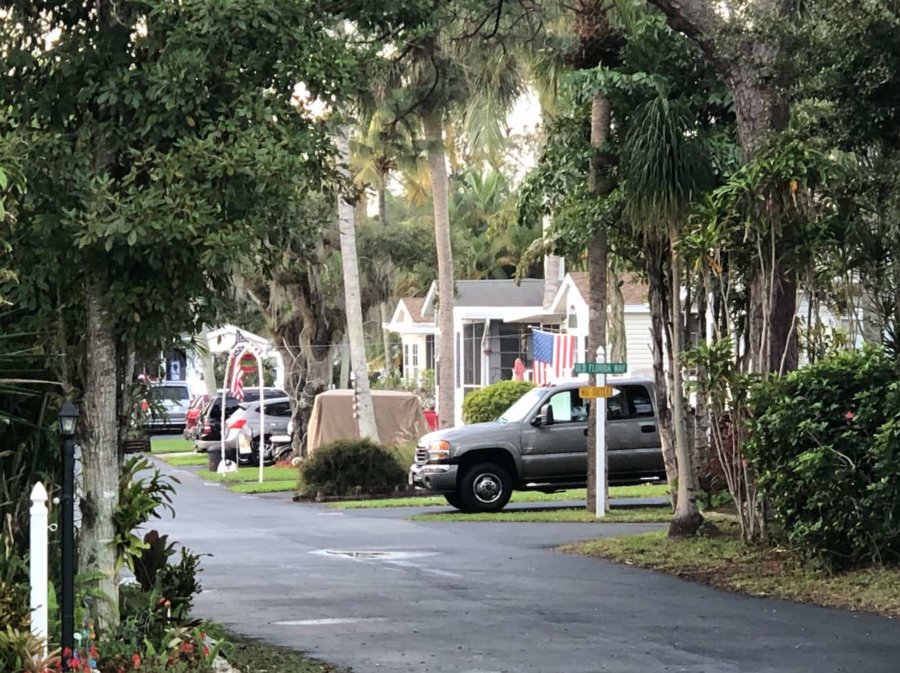
© Tiny House Talk
The Growth of Tiny And Small Homes Over the Last Decade
When I first started Tiny House Talk in early 2009, it felt like tiny houses was a new sub-culture that not that many people really knew about. Just a few short years later, the idea continued to grow as more and more people saw the beauty in tiny. It’s always fascinating to see how tiny and how simple you could live if you wanted to and were allowed to.
By now, everyone knows exactly what you’re talking about when you mention tiny houses, right? Everyone by now has heard about them because they’re all over the Internet, YouTube, and even Home and Garden television. But how has the actual likelihood of getting to live in one changed since 10 years ago? That’s the real question, right?
Top 12 Trends To Help Bring Tiny And Small Homes To You in the 2020s and Beyond
That’s why I’ve organized what I believe are the top 12 trends that might help you live in a tiny house someday. Which do you think might effect you the most? Or at least, which one appeals to you the most? Take a look, think about it, and let me know in the comments so that your voice can be heard.
1. Growth of Tiny House-Friendly RV Parks
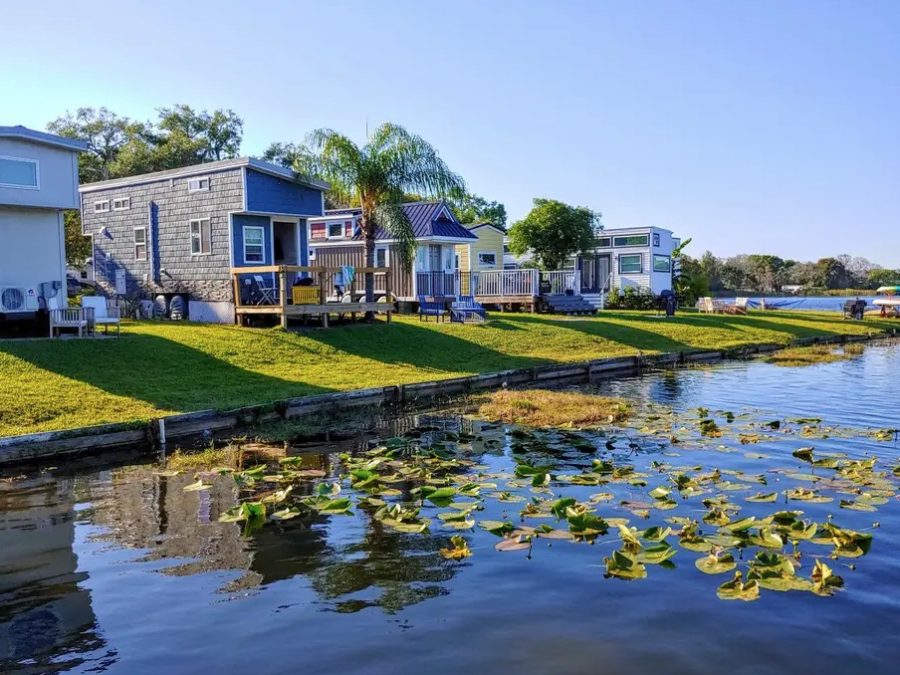
Images © Orlando Lakefront via Adam/Airbnb
More and more, we’re seeing RV parks that are tiny house-friendly. We’re also seeing some RV parks being redeveloped into tiny house communities, or hybrid communities as we will discuss in #7 below. Most RV parks mean that you have to pay monthly rent for your lot. You might find an RV park where you get to buy your lot so you can own the plot of land that your tiny house sits on. But most of the time, this is not an option and you have to pay lot rent. The point is, we’re seeing more and more tiny house-friendly RV parks throughout the country. And RV parks can also be the perfect way to develop a new tiny house community. So if you have your own land that you want to turn into a tiny house community, have you checked into designating it as an RV park and meeting those criteria for zoning, financing, development, etc.?
- Escape Tampa Bay Village in Florida
- Incredible Tiny House Community in Tennessee
- A real tiny house community in Florida
- Tiny Homes Estates Tiny House Community in Tennessee
- Lake Pleasant RV Park in Beaver, WA Welcomes Tiny Homes
- Flats RV and Campground Tiny House Community in BC
2. Park Model Tiny Homes And Communities
Park model tiny homes have been around for a while, and lots of tiny house builders are now building tiny homes based on the park model industry specifications because you can have more space with a park model. And this means we’re getting to see park models built to higher quality standards, like ESCAPE’s Classic. In some areas, park model communities are predominantly 55+ age-restricted communities that single out young people and families. With new park model communities propping up to meet the demands of the tiny house community and movement, it’s exciting to see this as another slightly larger avenue for tiny house construction. Park models are usually 400-sq.-ft. but still mobile as they are built on trailers with removable hitches.
- Old park model community revamped into modernized tiny home community in Palm Springs, California
- Townsend Park Model Cottage at Tiny Living Community
- Park Model Tiny Home in Moab, Utah with Fenced-in Backyard
- Explore more park models here.
3. The ADU (Accessory Dwelling Unit) Tiny And Small House Movement
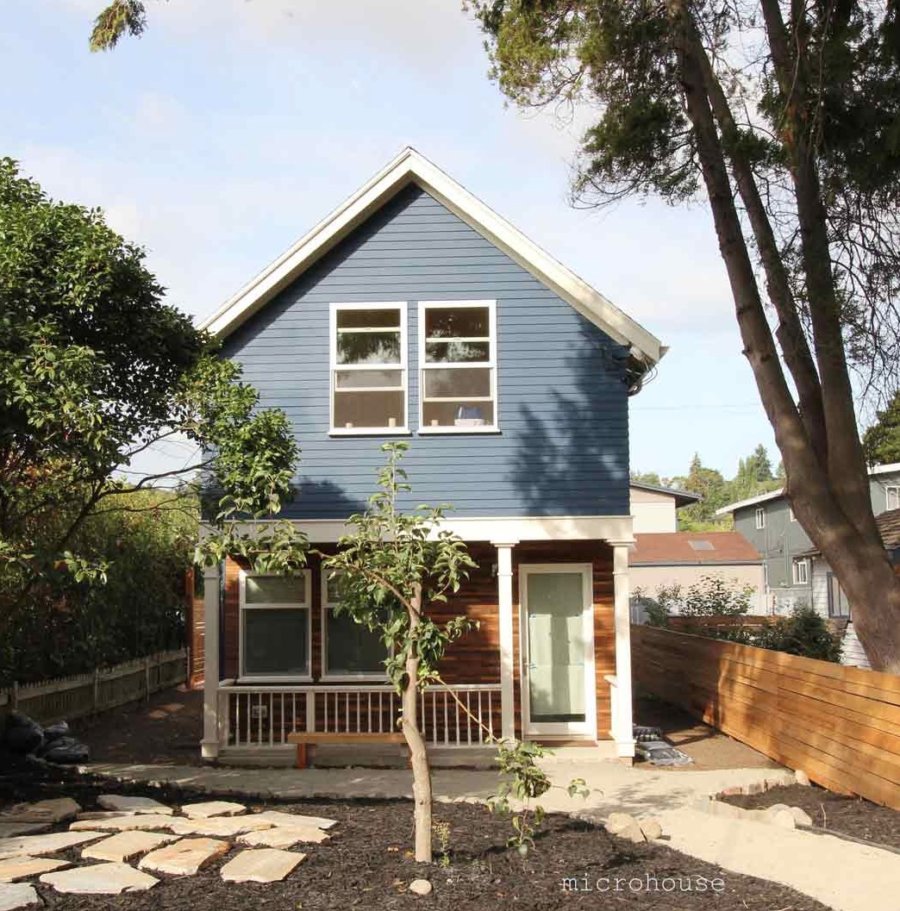
© microhouseNW – top 5 tiny and small house trends in Seattle
The popularization of the Accessory Dwelling Unit is inspiring because it’s yet another way for tiny and small homes to be designed, built, and lived in legally. By design, an ADU is really just another phrase for a guest house, studio, or in-law suite because ADU’s (accessory dwelling units) are just that, an additional dwelling unit on someone’s residential property which can be used as a guest house, home office, and the like. It can also oftentimes be used as a short-term or long-term rental to provide additional income for the homeowner, and additional housing (or temporary lodging) in the area. In areas like Portland, Seattle, Los Angeles, Asheville, and many other areas, this is a growing trend and can be a wonderful way to develop new tiny and small homes legally.
- Breakthrough legislation allows CA homeowners to build up to two ADU’s (Tiny Homes) on their property
- They Built A 400-square-foot ADU Cottage In Seattle… Moved In, And Rented Out Their BIG House!
- Blue ADU Nanostead Tiny House near Downtown Asheville
- LA Passes Ordinance Making Backyard Tiny Homes Legal
- How Backyard Cottages Are Being Sold Separately in Seattle
- Laurelhurst DADU Cottage in Seattle, WA
- Top 5 Tiny and Small House Trends in Seattle
4. Tiny Houses As A Solution To Homelessness
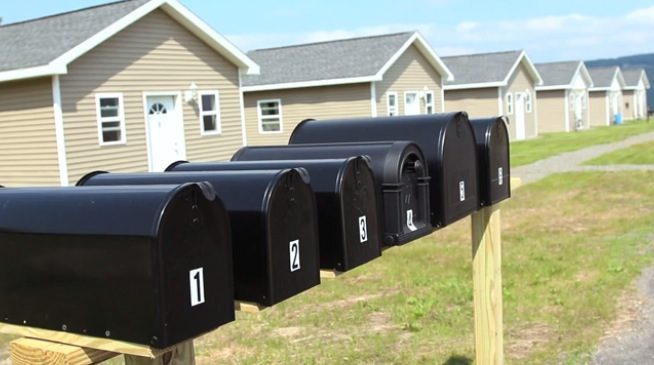
© BillMoyers.com – Second Wind Cottages Affordable Housing for Homeless
If you have a philanthropic heart, you’ll love the fact that tiny homes are being used throughout the world as a solution to decrease homelessness. From tiny temporary camping sheds to beautiful cottages on foundations, organizations around the world are using tiny and small homes to help relieve homelessness. Not to mention how effective prefab tiny homes can be during a disaster situation.
- Tiny House Villages For Seattle’s Homeless by Low Income Housing Institute
- Oakland to Accommodate Homeless with Shed-based Tiny Homes
- Tiny Homes for the Homeless in San Jose Wins Approval!
- Portland Green-lights Tiny Homes for Homeless
- Family’s Amazing 41ft Tiny Home on Wheels Built After Losing Their Home to CA Fires
5. Affordable Tiny House Options From Quality Builders
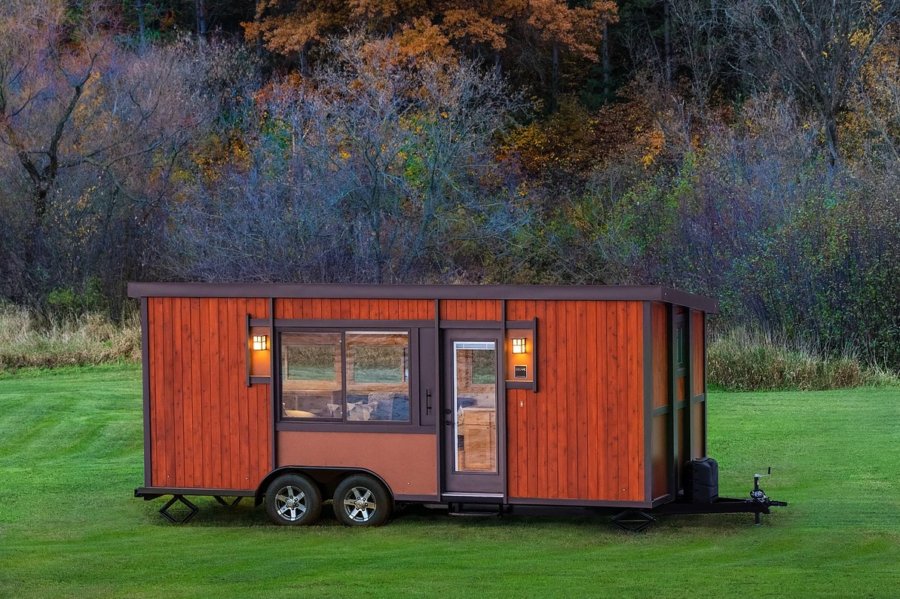
© ESCAPE – Escape Vista, starting at under $40k
The tiny house movement has grown so much and impacted so many people, but it has also left so many feeling left out and hopeless. Because for many, they honestly just can’t find a way to build a tiny house for themselves affordably like many of the DIY (Do-It-Yourself) stories we’ve featured. Whether it be because of lack of skill and resources, or other, like health reasons, it’s just not a possibility for everyone. This leaves the other option, buying a tiny house from a builder, which is usually surprisingly expensive for those who need it most. We believe this is why we’re seeing some builders design and build quality tiny homes at affordable prices, a few of which I’ve highlighted for you below. And in the next ten years, I think we’ll continue to see more options.
- Beautiful ESCAPE Vista Tiny House Starts Under $40k!
- Affordable $32k Tiny House: The Firefly by Core Housing Solutions
- Lightweight Camper Built Like A House w/ SIPs for 18k!
- 34.5-Foot Affordable Tiny House w/ Up To TWO Main Floor Bedrooms for $39,500
- From Prison to Tiny House Builder: Holy Ground Real Estate
6. Tiny House Vacation Rental Boom, As Predicted in Early 2013
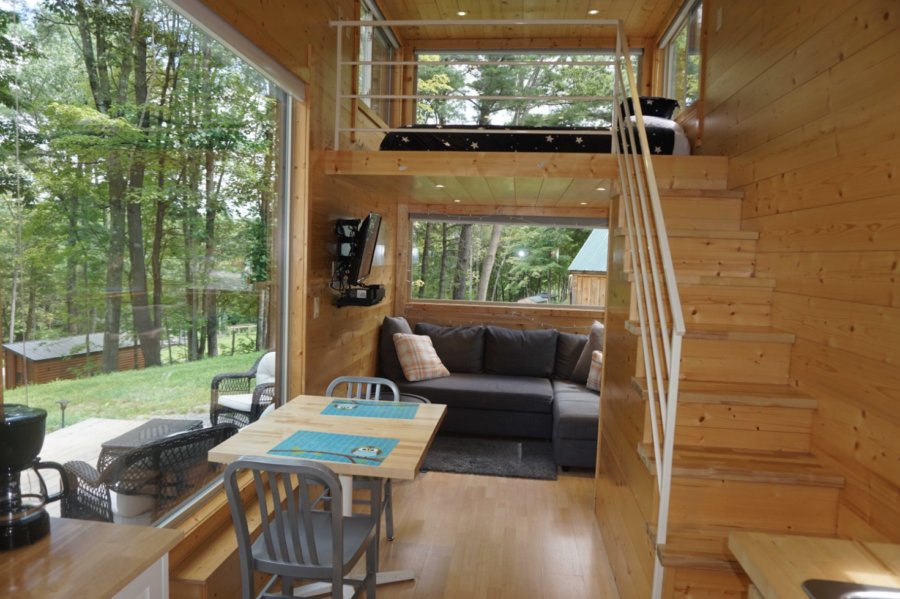
Images via a tiny house resort – The Oki Tiny House Vacation (this is an ESCAPE ONE/ONE XL Tiny House)
With tiny homes capturing the hearts of the nation, I had a hunch that before we ever get to see many real tiny house communities ever becoming mainstream, we would more likely see tiny houses being used as vacation rentals. Hence, now I think it’s fair to say that we’ve seen the explosion of tiny house vacations and glamping right? Also, many tiny house dwellers retire from the tiny life and so they figure, why not make their old tiny house a vacation spot for others to enjoy? And, meanwhile, they can rake in some rental income. Not a bad way to make the most out of the old tiny house you moved out, right? Turns out, it’s quite the business and I don’t blame anyone for doing it because it’s a great way to repay the cost of your tiny house build, and if you do it for long enough, you might even start profiting, too! And, it’s fun to get to share the experience of a tiny house with other enthusiasts, wouldn’t you think? And others, of course, are doing it and have been doing it as a business for years. These are campground owners, cabin resort owners, and the like. And many of them are buying, building, and adding tiny houses to their properties. Here are just a few examples:
- Montana Tiny House Vacation
- Pet-Friendly Tiny House Vacation With Dog-Park in Waldport, Oregon
- Tiny House Giant Journey Vacation
- New York Boho ESCAPE Tiny House Vacation in Queens
- Modern and Minimalist Kanga Tiny House in Austin, TX
- 2013 Tiny House Vacation Boom Prediction, my “Why Tiny House Communities Don’t Exist” rant
- More Tiny House Vacations
7. Hybrid Tiny House Communities with Short and Long-term Rentals
There are also communities which are what I would call hybrid tiny house communities in that their lots are a combination of short-term (vacation) rentals, medium-term (seasonal) rentals, and long-term rentals. And there are other variables, too. For instance, some of these communities may also be a combination of traditional travel trailers and motorhomes along with tiny houses on wheels, park models, along with the possibility of other structures, too. And there could be even more variables, too. For example, some of the lots can be privately owned and occupied, privately owned and rented, and/or any other variants you can imagine, right? Anyway, here are some hybrid tiny house communities that we know of.
- Tiny Tranquility: A Tiny House Village & Vintage Trailer Park in Waldport, Oregon
- Video Tour: Northern California’s Delta Bay Tiny House Community
- Flats RV and Campground Tiny House Community in BC
- Tiny House Community in Orlando Florida RV Park
- Lakeside Tiny House Vacation Rental in Orlando Tiny House Community
- Incredible Tiny House Community in Tennessee
- Old park model community revamped into modernized tiny home community in Palm Springs, California
- Explore more communities
8. Development of Small House Communities
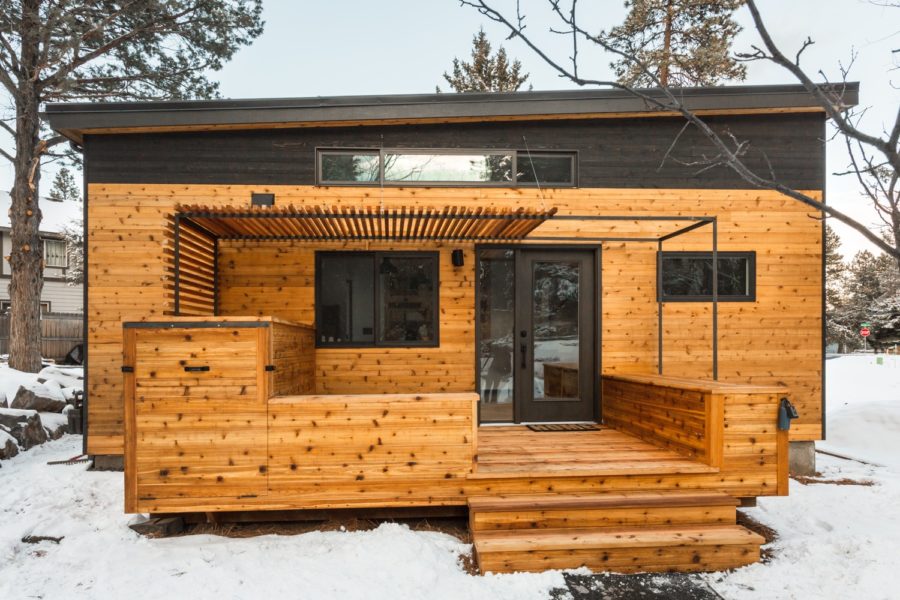
© Tiny Smart House – See Original Post Here
Many people forget to stop and realize that the entire reason tiny houses on wheels are so popular is only because it’s illegal to build under 1000-sq.-ft. in most areas of North America. The truth is that most of our readers don’t really want a tiny house on wheels, they want an affordable small house on their own land. And aside from some current homeowners, who get to build an additional ADU (accessory dwelling unit) on their properties if they are allowed, you really can’t build under 1000-sq.-ft. in most places. But that is changing. And that’s where we’re seeing creative people find ways to design and build beautiful new communities filled with lovely little homes. I think it’s the future, but it’s going to take some time to see the progress that we want. Though, I feel that the 2020s could be the decade of new small homes – backed by the demand from the 2010s!
- 800-sq.-ft. Small House Built in 2019 (PENDING) in Atlanta
- The Incredible Hiatus Tiny House Built for Tiny Cottage Community in Bend, Oregon
- Tiny House Estates Community in Northern Indiana
- A real tiny house community in Florida
9. ‘Tiny’ Has Inspired A New Wave Of Prefab Homes
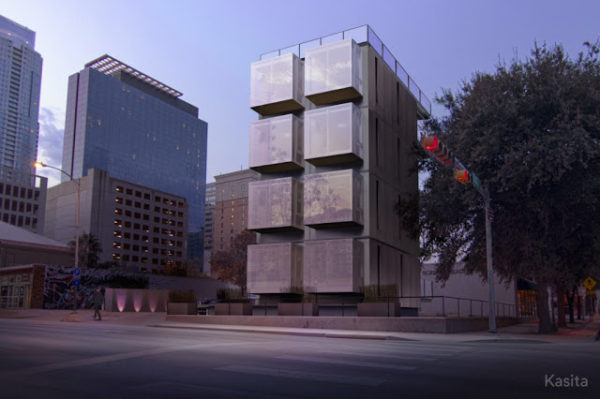
© KASITA – see original post here
The popularity of tiny homes has been growing alongside other fun niche structures like treehouses, floating homes, school bus conversions, van life, shipping container homes, and structures of that nature. It has also spawned a new wave of corporations who are attempting to create the “iPhone of Tiny Homes”. Some of these companies are using shipping containers, and others are developing their own unique designs using other construction methods. Most of these structures are mobile, and some are even stackable. Some of these companies have a vision of a world where you buy a tiny house from them and you can move it to any which of their locations throughout the world. Essentially, you can have them move your tiny house to whatever location you like, if the need were to arise. Pretty interesting concept, isn’t it?
- The High Tech and Affordable Kasita Tiny House: The Next Revolution in Housing?
- OFIS Arhitekti Funky Stackable Housing Units
- Prefabricated Modular Stackable Tiny Housing
- B-and-BEE Stackable ‘Honeycomb’ Micro Shelters
- Pre-Fab Multi-Use Smart-Modules by Casa-Cubo Brazil
- Prefab Shipping Container Tiny Home on Amazon!
- Kanga Tiny House and Cottage Combo
10. Opportunities for Development of New Tiny And Small House Communities Still Exist
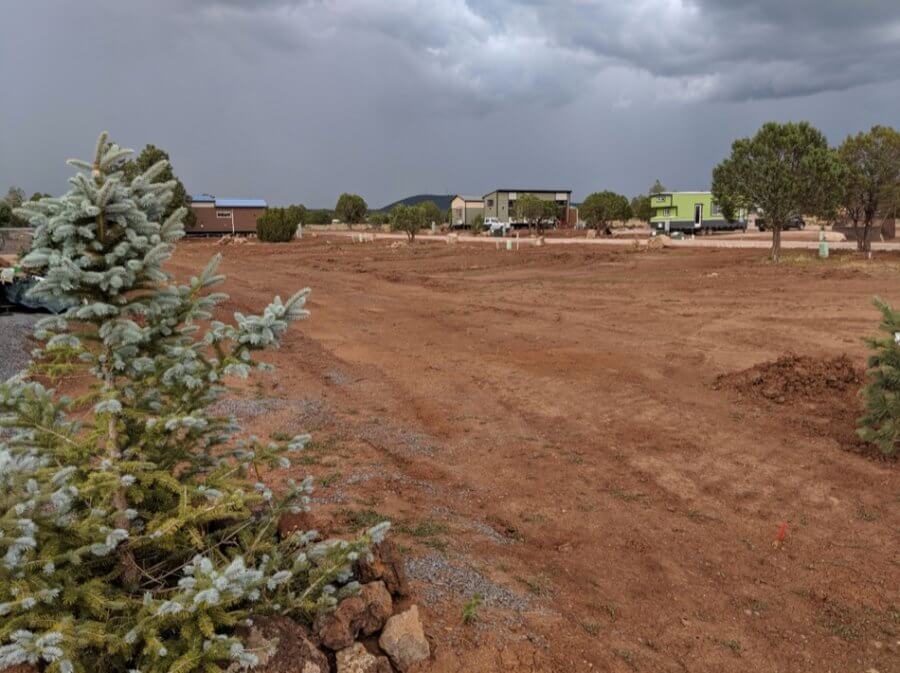
© LuxTiny Community in Arizona
There is now very likely more demand and desire than ever for tiny and small housing! And unfortunately, there is not even close to enough options out there. This means the opportunity is out there for you or anyone else out there looking for ways to develop permanent tiny and small housing solutions. The land part of the equation must be solved. For this to happen, we need tiny home builders to shift towards a focus of development. If tiny house builders can learn to become real estate developers, we will see a very bright and abundant future of tiny home communities.
- Amherstburg Votes To Allow ADU Tiny Homes (Ontario, Canada)
- Tiny Tranquility: A Tiny House Village & Vintage Trailer Park in Waldport, Oregon
- Tiny House with Slide-Outs For Sale in Flat Rock, NC Simple Life Community
- The Incredible Hiatus Tiny House Built for Tiny Cottage Community in Bend, Oregon
11. The Reality of Real Estate – It Is A Slow To Evolve Industry!
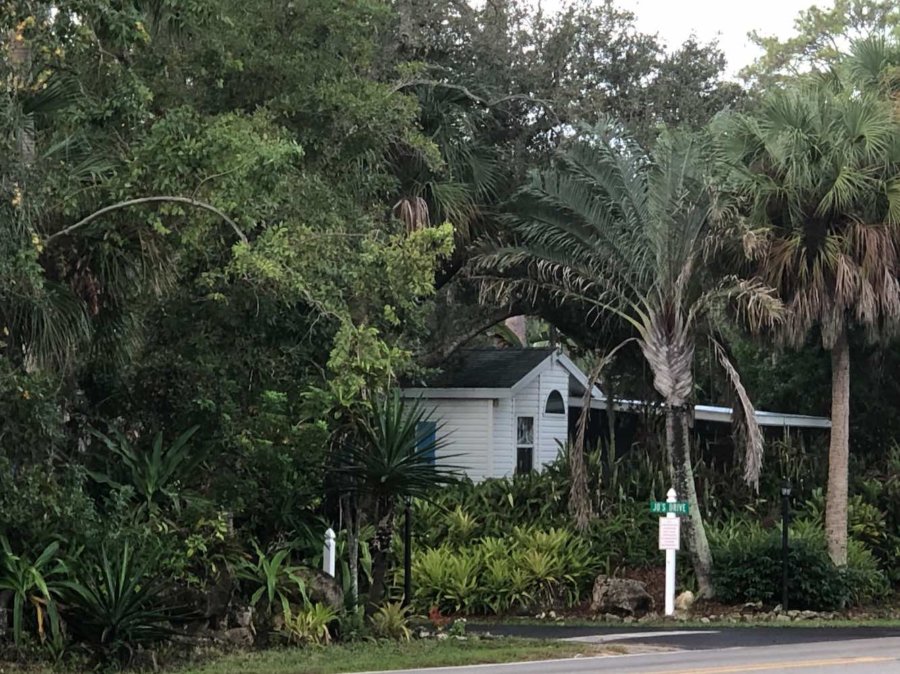
© Tiny House Talk
The harsh reality of real estate and tiny houses is this: it’s a slow to evolve industry. One of the slowest in the world, I might add, due to its very nature. The zoning, regulations, financing, insurance, infrastructure, not to mention politics and lobbyists. All of that being said, progress is being made slowly but surely. And that’s just the way it is. Where do you see tiny and small homes through the 2020s and into the 2030s?
- Fresno Legalizes Tiny Houses with New Zoning Change
- How Do I Get Zoning Passed for Tiny Houses in my Area?
- Brainerd, MN Changes Zoning to Allow Smaller Homes
- Amherstburg Votes To Allow ADU Tiny Homes (Ontario, Canada)
- Breakthrough legislation allows CA homeowners to build up to two ADUs (Tiny Homes) on their property
12. DIYers: Let’s Not Forget About The Growing Amount of DIYers Out There Building Their Own Dream Tiny And Small Homes And Making Their Realities Come True

© Ruthardt Family – original story here
Blood, sweat, and tears are often just a few of the costs of embarking on the journey of designing and building your own tiny home, cabin, or small house. As is the case with many things, in the end, the struggle makes it all the better, which is why so many express so much satisfaction in building their own tiny homes. But don’t let this allow you to believe it is an easy undertaking, as many try and quit, others finish with a product they are not satisfied with. For the ones that are truly dedicated and capable, those that take their time thinking through and refining their design, the outcome pays off. So here are some DIY stories that may serve as inspiration (or fair warning) for you. As with anything, life changes. And many a times, these DIYers have to part with their homes because of changes to their lives. This can be a great opportunity for you, if you’re prepared because you can get a one-of-a-kind home at a usually pretty affordable price compared to buying from a builder. So many tiny and small homes end up on the market for various reasons and changes to lifestyles (having children, downsizing further, going overseas, building a new tiny house, etc.).
- Mat & Danielle’s NEW, DIY Van Conversion (Beautiful And Genius)
- Single dad turns shed into cheap/DIY/debt-free tiny home
- Family Designs/Builds Small Home, Mortgage-free! (pictured above)
- Couple’s (Finished) DIY Shedsistence Tiny House
- Living in a $5k camper renovation: an affordable alternative to a tiny house?
What do you think is going to happen with tiny homes in the next ten years?
What trends do you think we will see? What do you think will affect you the most? Or, in other words, what do you hope to see for yourself in regards to housing options in the next ten years? Also, do you think I’m wrong about anything? What do you agree and disagree on? Why? Let’s talk about it in the comments!
You can share this using the e-mail and social media re-share buttons below. Thanks!
If you enjoyed this you’ll LOVE our Free Daily Tiny House Newsletter with even more!
You can also join our Small House Newsletter!
Also, try our Tiny Houses For Sale Newsletter! Thank you!
More Like This: Tiny Houses | Real Estate | Small Houses | Articles
See The Latest: Go Back Home to See Our Latest Tiny Houses
This post contains affiliate links.
Alex
Latest posts by Alex (see all)
- Escape eBoho eZ Plus Tiny House for $39,975 - April 9, 2024
- Shannon’s Tiny Hilltop Hideaway in Cottontown, Tennessee - April 7, 2024
- Winnebago Revel Community: A Guide to Forums and Groups - March 25, 2024






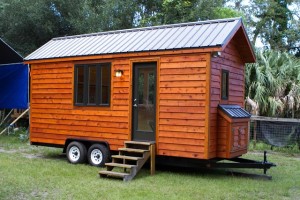
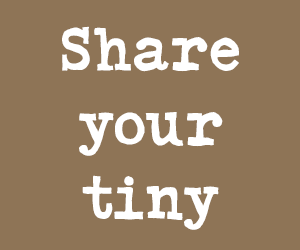
As usual a bunch of really informed articles. Having lived and worked out of the carpenters local 1277 in Bend I can say the cost of land, ANY land there is going to be beyond any but the Idle rich today. You will have to go north to Redmond, East beyond Prineville and as far south as Chemult to find a half acre that is buildable for less than $12K at today’s prices. There are still lumber mills selling from their thick and thin rough cut piles where deals can be made if you can do the work so less than 500 sqft of house can be built for $50 per sqft, primitive but doable. Some areas south will have well drillable water levels when you south of Lava Butte. Oh and be sure to bring your JOB with you as work is as hard to find as it is in Alaska.
omg, Bill, in Greater Vancouver, B.C. you can’t even purchase the parking lot with a condo for $12K. they usually start at $25K. A buildable lot in greater Vancouver is a million. Now if you go over to Vancouver Island and head in to the rural areas, yes you can purchase a lot or even some thing which looks like a half acre for $200K. In Metropolitian areas in North American, housing is expensive. City planners have not kept up with the tiny house movement and in my opinion, its a viable alternative. More and more “families” a single individuals. they never marry, some may have one child, but families aren’t the size they once were. Cities need to start looking at small lot subdivisions. In some areas there are 32 ft. lots by of course 128, but if that were half the length, there could be twice the number of homes. Not all people want to live in apartments, they’d like some thing about the size of an apartment, but with a small yard. that is where tiny and small homes come in
At one time, not so long ago, most homes weren’t over a 1000 sq. ft. while growing up in the 1950s early 1960s, most homes in Greater Vancouver, B.C. were 900 to 1200 sq. ft., 3 bedrooms one bathroom. What most of learnt to do was get along and share. the change in lot size had a lot to do with the creation is more and more suburbs, but as we start to run out of land and have to concern ourselves with things like pollution, climate change, small homes on small lots may be come much more attractive.
e.a.f. Yes, to get anything reasonable in B.C. you have to be at least 70 klics from NY larger city and nowhere near saltwater. But as most of these options will not be available to my Canadian Ami’s that follow the I.B.C. I am VERY happy the Crown has seen the light and is allowing the small home movement to creep back to the population centers. Although I have traversed back and forth to Alaska many times I found I had mates in the bush to share a brew with by the fire in any area I was touring. Most Yanks have no idea how valuable having Canada as Mates can be, and how vital their friendship is.
Not that much different than a mobile home park. I know people who purchased 80 foot long mobile homes, owned their land, and lived that lifestyle for years. Today’s Tiny Parks look a lot like mobile home parks and some have both. Not much has changed from the image of a trailer park to a trailer park with what looks like a scaled down house on the trailer instead of an aluminum can with no discernible outside features other than hanging lights off of the tin foil porch roof. It’s been this way since the 1940’s.
Disagree, there’s a lot different from building quality, ability for customization, ability for people to build their own, range of options, legalization going forward will be very different, flexibility and advantages of modern technology that are revolutionizing what can be done, applications that extend beyond just simple housing, the simple fact they’re not limited to only being on wheels or have to be mobile, etc…
It’s hardly the same other than old stereotypes and biases some people still need to get over…
Very much agree James. Sure, you can find a park here and there where things might still look a bit like the past but there are some really impressive tiny home communities/villages/parks out there
If you can even find regular all ages trailer parks, most have been bought out by realtors who flip then for more luxury condos and high end homes. I live in Snohomish County Bothell Washington, just north of Seattle. My in-laws have been here for generations and my family since 1982. The country small town feel then to now a cement covered mass of cars and people is so harsh. Locals are priced out of western Washington most the time. I have to sell my home due to divorce but only have a choice for the few 55 plus trail park communities with buying a prepared older trailer, high rent space. I decided to search for an out of county piece of land and put a park model or tiny home on it to live out my life. I can’t live near my children. There are no good solutions for elderly disabled folk who need medical nearby. Can’t find affordable living because too high even for studios.
Mr. Worth sees one view. That is transitional. People do not change much if their money and lifestyle do not change much so yes they may live in low priced housing and trailer parks. Attitudes also make a difference in how one lives and can affect the outward living condition appearance. Some of the photos show the upgraded lifestyle/living conditions for those who choose this style. The more run down and poor living an area looks may create a feeling of poor, troubled or high crime area much like the slums of bigger cities. With a better living style home/trailer the appearance may be a safer one. Many folks have healthier attitudes when they feel richer and safer while living in a better built/better looking tiny home or upgraded trailer no matter the size. It takes time to make this transition just as it takes time to change peoples view of the different lifestyle.
As climate change becomes more of an issue, I do believe smaller homes on small lots will become more popular. There are trailer parks and then there are trailer parks, or rather what we tend to refer to as manufactured home parks. Many of them are not rental pads but rather self owned lots as part of a strata. In some areas, the land is rented but the homes are manufactured double and triple wides and the homes themselves when put up for sale by their owners, will list for $300K. –Nanaimo, B.C. An older double wide, on its own land, in a strata will run you approx. $425K in Surrey, B.C. some people really want that feeling of having their own walls. Not every one likes the idea of apartment living. there is also the problem in many apartments/condo that you can’t smoke in your own home or balcony. With weed now being legal in Canada, some condo buildings still have their no smoking laws and that includes no toking laws. If people had their own land, they’d be able to smoke and toke.
Some will always want the status home, but as land values increase, we may see a wave in the future of small lots with small free standing homes, some may be two stories and have 400 sq. ft. down and the same up. Uses less natural resources and energy. You could double the population in an urban area in this manner and there doesn’t seem to be a reduction in the world population……….
Local zoning laws and code restrictions have been and remain the primary deterrent, by far, to greater small/tine home growth. As local zoning laws, as well as building code requirements, continue to recognize small and tiny home growth (and the necessity for the same given the housing crises existing throughout the country) it is inevitable that small and tiny home development will expand for a variety of reasons. Nothing has happened or will happen overnight but there’s enough momentum within the industry that I suspect changes will continue to occur and going small/tiny will be much more than what some less knowledgeable have labled as a fad. And, we’ll all be much better off for it.
Not to change the subject a little, but this is a great article Alex. One of your best. It gives hope for people like me: a 74-year-old widow, lives on a small farm in TX, wanting to live in a small sustainable house in the same area. I’ve built a house many many years ago, but not able to do so now. It gives me hope that one of these options you mentioned would work and I will be able to realize my dream.
This article is comprehensive and focuses clearly on the issues. It is one of the best I have read on the tiny house subject. Thank you again for your dedication.
As already said by others, my problem has been finding a (legal) location for my Tiny House (on wheels). I’ve been attending as many gov’t meetings as possible (in Athens, GA) over the past FIVE years and have been ‘educating’ the mayor & commissioners (and the Planning Commission) about Tiny Houses and how they could be one option for creating affordable housing which they already know is in short supply (they even spent about $80,000 for a Workforce Housing Study which revealed (in 2016!) that affordable housing was/is urgently needed). There’s a slight possibility that this year will see some zoning changes but I’m not holding my breath. I’ll be pleasantly surprised to hear about and changes that will allow me to live IN Athens. For now I’m parked in an adjacent county and am isolated from everything I need or want to get to. It’s not a healthy way to live due to ‘chronic loneliness’ which has been recognized by the American Medical Association as a condition that can decrease one’s lifespan by up to ten years! I’m not giving up on changing Athens’ gov’t officials making the necessary zoning changes…or else I’m moving to Mexico!
Is there any in Saratoga Springs Ny or Ballston Spa Ny? Would love to have one with 2 bedrooms.
My town recently built 4 plumbed-in tiny houses and a laundry on the site of a demolished house next to our hospital. Each tiny has its own solar, rainwater tank and a deck as big as the house.
They are inhabited by formerly homeless people whose health means they need to be near to the hospital. Another tiny village of tinies is planned in a suburban part of town. There has been talk in other parts of Australia for more of these villages for the homeless.
With our terrible fires here, there is some talk of plumbed-in tinies being a good solution for re-building burnt down farmhouses.
I’m also wondering if a trend migjt begin here in fire-prone small towns and hamlets where mobile tinies might be built so the house can be driven away from the fire when it comes back and then the land itself returned to.
Another trend we might see here in Australia, where we have the same boomer population percentage as other western countries, is that more and more retiees might sell their houses and become fulltime grey nomads, seeing the country before the whole lot burns and what little snow we have is gone forever.
This is very interesting, Anne, thanks for sharing. Would love to learn more about the tiny homes being built there for the homeless.
Go to changinggosford.blogspot.com for posts ‘Tiny houses’ and, on 24th July 2018, ‘Topped out’.
I am at 81 yrs. still thinking about the dream of living in a Tiny. The town that I spent many years in is supposedly so progressive and really a great place to live. I can not understand why the Housing people here have not even considered the thought of making room for legalizing Tiny House living. The lists for housing even seniors is so out of site, it’s really disgusting. So many, young, singles and vets could have a place to live comfortably in a Tiny.
I have to mention though that I am from the North East in Massachusetts. Thank you, I have just been seeing the video of the little Point? opps! I just forgot the name of it, I put it in my bookmarks though. lol!
I’ve lived in a townhome and a single family home with neighbors close by. For my next home, I want a lot of space between me and my neighbors and no more street parking so people aren’t parking in front of my home.